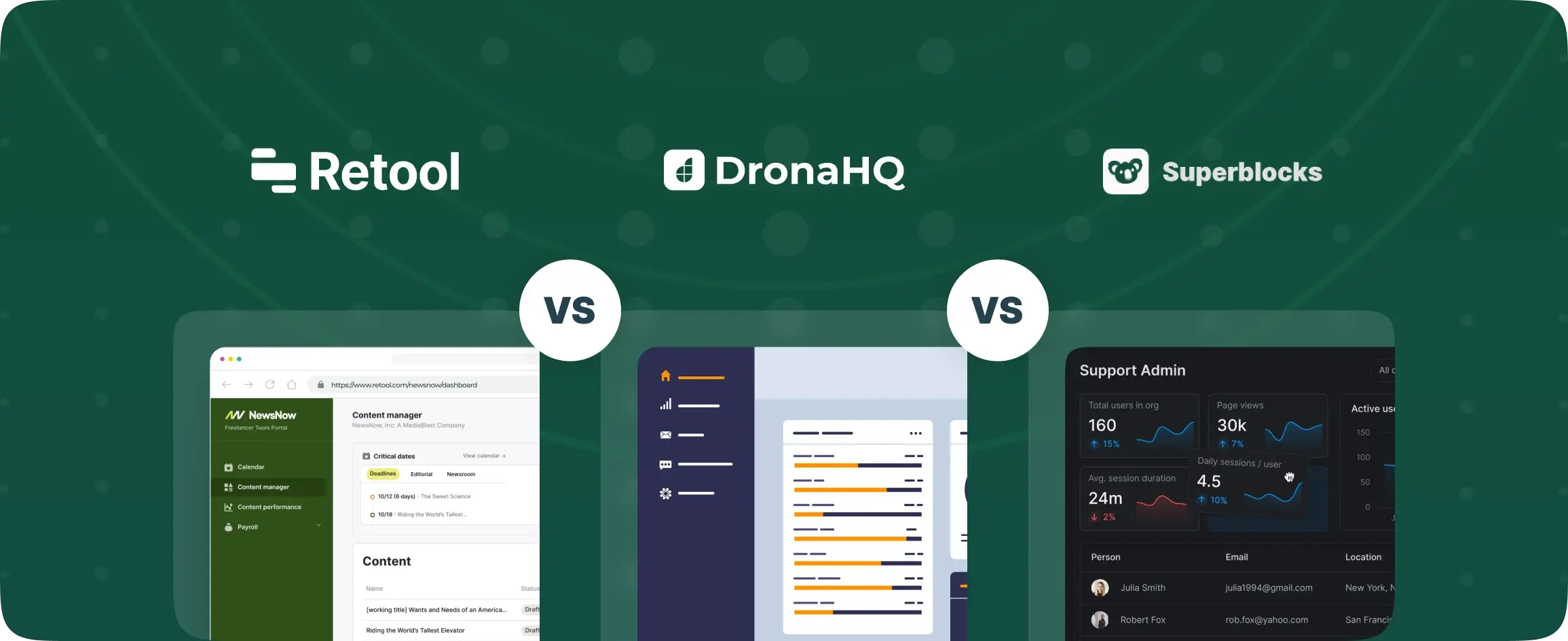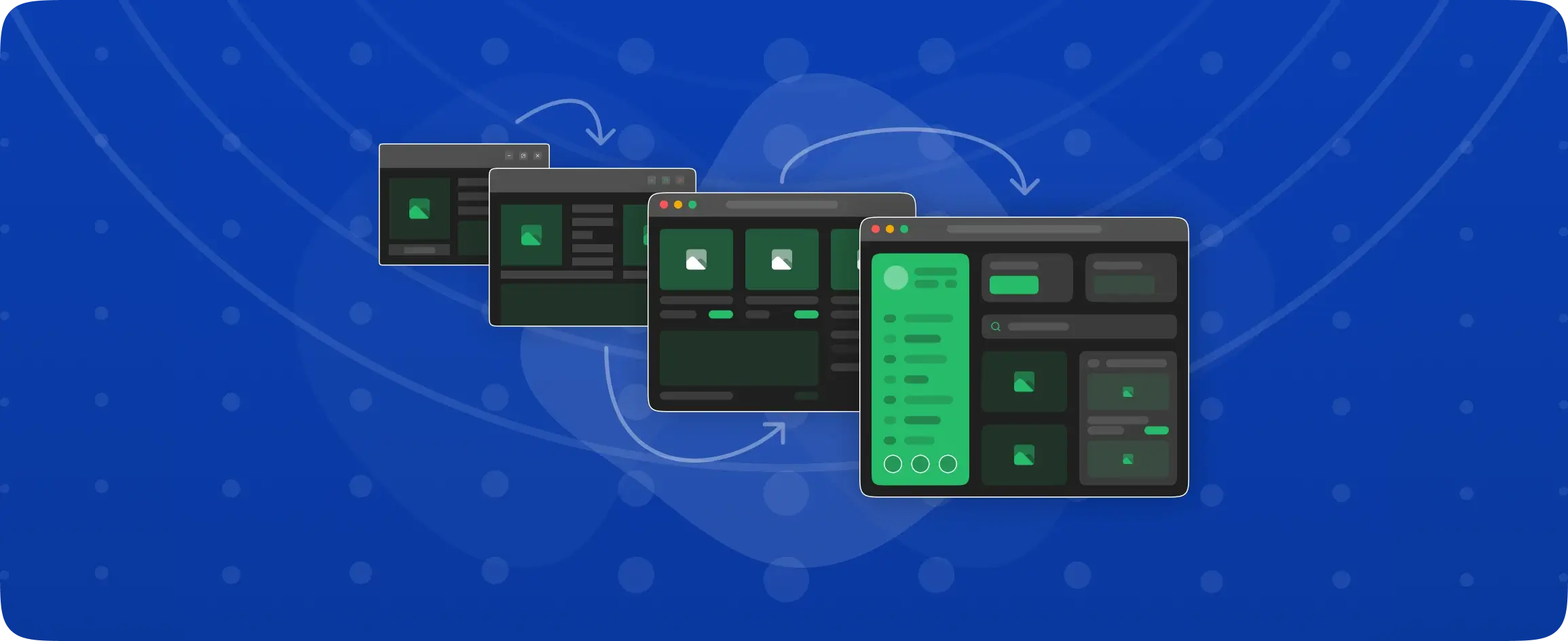

The synergy of model-driven development and low-code platforms
Model-driven development and low-code development platforms are often debated upon, based on them gaining traction in the market. In spite of the arguments emphasizing on their differences, both the disciplines are close conceptually and have the substantial potential of applying existing knowledge and cross-pollination. In this blog, we will be exploring the similarities and differences of the two domains and more.
What is Model Driven Development?
Model-driven development is a software development approach that aims to enhance collaboration and communication between business domain experts and software developers by bridging the gap between programming languages.
In this approach, models take precedence over lines of code, providing a shared visual language for both domain experts and developers. Using visual building blocks, domain experts can effectively convey the problem or business requirements to the developers, who can readily comprehend them. Simultaneously, developers can showcase potential solutions and innovative approaches to address the challenges.
This back-and-forth interaction facilitates a deeper understanding and agreement between the domain experts and developers before proceeding to each subsequent development step. The development process is streamlined leading to more efficient and effective collaboration between stakeholders.
Model-Driven Development vs Low-code Development
Model-driven development is often confused with low-code development, as both approaches aim to simplify software development. While Model-driven development is a much larger concept, Low-code development can be considered to be a subset of Model-driven development. Model-driven development goes beyond low-code by providing a formal modeling language and a set of development guidelines.
On the other hand, Low-code development focuses on providing a visual development environment that allows developers to build applications with minimal coding. It is estimated that 70% of the businesses will be using Low – code development by 2025.
Model-Driven Development:
Use of Models: Models are used to specify, test, simulate, verify, modernize, maintain, understand, and generate code for the system, among many other activities.
Fosters Collaboration and Productivity: Model driven development also serves as the most important principle of low-code development, acting as the bridge that allows IT and business domain experts to collaborate and therefore increase productivity.
Ease of access: Model-driven development provides developers of all skill levels with features such as data access, AI for quality improvement, and cloud-native architecture, empowering them to create robust and efficient applications.
High Level of Abstraction: Model-driven development provides a high level of abstraction, allowing developers to focus on the behavior and structure of the system rather than getting lost in low-level code implementation details.
Expertise in Modeling Languages: Model-driven development requires developers to be proficient in modeling languages and tools to create and manipulate the models effectively.
Flexibility and Extensibility: One of the strengths of Model-driven development lies in its flexibility. Changes made at the model level can automatically propagate to the generated code, making updates and modifications efficient.
Low-Code Development:
Visual Programming: Low-Code Development is built on the principles of Model driven development, combined with visual programming and automatic code generation capabilities.
Rapid Development and Deployment: Owing to the vast availability of features, Low code developers can design the user interface and iterate at a much faster rate.
Higher Level of Abstraction: Similar to Model driven development, Low – code development also provides a higher level of abstraction, shielding developers from low-level code complexities. With the presence of abstracted code, additional coding is only needed for high level customization.
Scalability: Low-code development platforms are designed to scale along with the growth of an organization and its applications. This scalability ensures that applications remain performant and reliable as the business expands.
Pre-Built Integrations and Components: Low-code development offers pre-built integrations and components, reducing the need for custom coding and accelerating the development cycle.
In conclusion, while Model-Driven Development and Low-Code Development have their strengths, in the case of model-driven development, the graphical interface represents merely the outer layer; the genuine potency resides within its foundational framework.
Moreover, model-driven development incorporates automation to streamline processes like configuration, testing, QA, and integrations. This automation significantly reduces the burden on professional developers, leading to increased productivity and accelerated development timelines, combining the two approaches can lead to increased flexibility and productivity. By integrating Model-driven development principles with the visual development aspect of low code, developers can leverage the best of both worlds and create applications efficiently, even with evolving requirements.
However, combining low-code and model-driven development increases flexibility—from dynamic application monitoring, to cloud deployment opportunity, to debugging and runtime engine updating.
How Does Model-Driven Development Work?
Model-driven development works by capturing the system’s requirements, structure, and behavior in visual models, which are then transformed into executable code. This transformation can be done manually or through automated tools and techniques.
The key concepts revolve around models, meta-models and code generation. To start with, developers use a modeling language. The created models are then validated by the defined metamodels. They are then transformed into executable codes.
- Metamodels define the structure and rules that govern the models. They serve as the blueprint for creating valid and well-structured models within the development environment.
- In Model driven development, models are not only used for design purposes but also serve as a basis for code generation which significantly reduces the manual coding effort.
Both Model driven development and Low – code development follow a similar approach. The steps are as follows:
1. The first step in Model-Driven Development is to gather and analyze the requirements and needs of the application. Stakeholders collaborate to define the desired outcomes and functionalities, which are then translated into models.
2. With the models in place, the design and creation of the application’s business processes and workflows begin. This involves defining how the application will function, interact with users, and handle data.
3. Once the models have been created and the application’s design is finalized, the next phase involves validation and verification. Comprehensive testing ensures that the application meets the specified requirements and functions as intended. After successful testing, the application is ready for deployment.
How do you Build an App With Low Code?
Low-code platforms provide a drag-and-drop interface that allows users to design and configure their applications using pre-built components and templates.
To build an app without code, you typically follow these steps:
1. Define the app’s requirements – Before starting, it’s important to clearly define the requirements of your app. This includes identifying the features, functionalities, and user interactions that you want to include.
2. Choose a visual development platform – There are several visual development platforms available. These platforms provide a range of pre-built components and templates that you can use to design your app’s user interface and logic.
3. Design the app’s user interface – Using the visual development platform, you can drag and drop components onto the canvas to design your app’s user interface. This includes defining the layout, adding buttons, forms, and other interactive elements.
4. Configure the app’s logic – Once the user interface is designed, you can configure the app’s logic and behavior using visual workflows or rules. This includes defining how the app responds to user interactions, connects to external services, and processes data.
5. Test and deploy the app – After designing and configuring your app, you can test it on different devices and platforms to ensure it works as expected. Once you’re satisfied with the app’s functionality, you can deploy it to the app stores or share it with your intended audience.
Unlock More from Model-Driven Development Using DronaHQ!
DronaHQ, with its powerful low-code platform, takes Model-Driven Development (Model driven development) to the next level, offering a range of features that enhance speed, security, and user experience. Let’s explore how DronaHQ enables organizations to unlock more potential from Model driven development:
1. Speed:
DronaHQ accelerates the entire application development lifecycle. Developers can swiftly create and deploy applications, reducing time-to-market significantly. This increased speed allows organizations to stay agile and responsive to changing business needs.
2. Security & Analytics:
DronaHQ prioritizes the security of applications The platform offers robust security features and ensures compliance with industry standards. Additionally, DronaHQ provides powerful analytics capabilities that enable organizations to gain valuable insights from their applications’ usage data, allowing for continuous improvement.
3. Rich UI Builder:
With DronaHQ, creating visually appealing and feature-rich user interfaces becomes effortless. The rich UI builder offers a wide range of UI components and design elements, enabling developers to craft intuitive and engaging user experiences for web as well as mobile.
4. Actionflow & Automation Builder:
DronaHQ empowers users to define complex workflows and automate business processes easily. The actionflow and automation builder enables the creation of custom logic and automation, streamlining repetitive tasks and enhancing overall efficiency.
DronaHQ finds diverse applications across various industries and business domains. Some prominent use cases include:
1. Extend CRM Systems – DronaHQ’s Model driven development tool can be leveraged to create custom ui on top of complicated CRM tools. Create apps that join data from CRM, customer support tool feature-rich CRM systems, enabling businesses to manage customer interactions, sales pipelines, and marketing campaigns effectively.
2. Customer portals – DronaHQ enables the creation of engaging and customized web portals tailored for clients, suppliers, and collaborators. Its advanced user administration features guarantee secure access to sensitive data for your users.
3. Data dashboards – DronaHQ simplifies dashboard creation, offering intuitive pre-built UI components for designing informative and visually appealing dashboards. Its user-friendly interface streamlines data visualization, enhancing decision-making and insights for users.
4. Digital journeys – Create personalized experiences, deliver automated assistance, share real-time updates, issue alerts, manage notifications, and facilitate password recovery.
And more! – The versatility of DronaHQ’s Model-driven development tool opens up possibilities for various other applications, ranging from inventory management systems to field inspection or digital banking and beyond.
By harnessing DronaHQ’s Model-driven development tool, organizations can achieve accelerated app development, ensure robust security, and deliver exceptional user experiences, thereby transforming their digital landscape.
Conclusion
Model-driven development is a groundbreaking approach that leverages visual models as the foundation for software development. By shifting the focus from manual coding to visual modeling, Model driven development has enabled developers to build applications faster and with greater accuracy. As a result, software development has become more agile, responsive, and aligned with business needs.
As technology continues to evolve, Model driven development and tools like DronaHQ pave the way for a brighter future where innovation, collaboration, and efficient development converge to bring forth exceptional software solutions. DronaHQ’s low-code platform empowers developers to embrace Model-driven development principles, unlock more potential from their development process, and accelerate the delivery of feature-rich applications.



